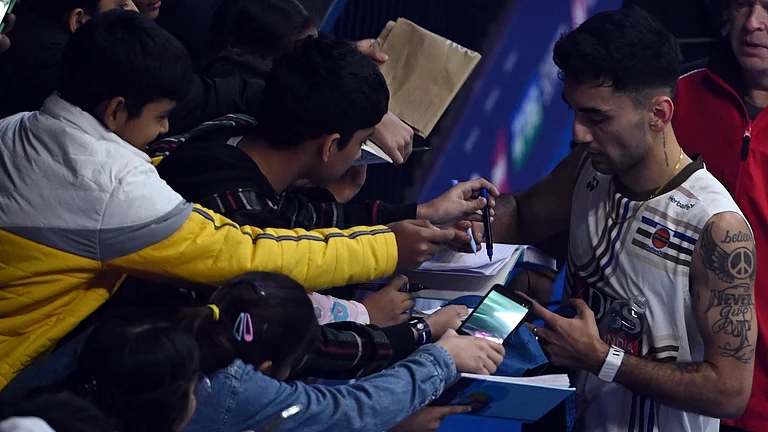Maze of Lanes
I have worked in the Saraswati Kanya Inter College in Kashi for 25 years, the last 11 of those as its principal. Located in the Neelkanth Mandir mohalla beside the ancient Kashi Vishwanath temple complex, the school is around 125 years old and is one of the oldest for girls in the area. Our school suffered a lot during the creation of the Kashi Vishwanath Corridor. It then remained closed for Covid in 2020. When it reopened nearly two years later, the corridor had already been built. All roads leading from across town to the temple had been blocked.
Before the corridor was built, all lanes in this area were interconnected. Students, who live within a 2-3 km radius of the school, could reach the school easily. But now, as they too have to take the tourist route from Gudaulia to Baansfatak to reach Neelkanth, many choose to leave. From 300-350 students in 2018, we are down to about 70-75. When the Corridor was being built, we were promised development. But as a teacher, I don’t understand development that comes at the cost of girls’ education.
Eternal City
I remember when this street always smelled of incense and rang with the incessant sound of khanjani and mridangam. This is Kashi, where Shiva dwells in every home and person. They say in Kashi “Har kankar Shiv Shankar (Shiva resides in every stone)”. Especially so here, one of the world’s oldest continuously inhabited neighbourhoods and home to Kashi’s oldest temple, the Vishweshwar temple, that houses the linga of Lord Vishwanath. Today, all you can hear is the noise of construction during the day, and the silence of desertion at night.
Vishwanath is said to be the God of All Life—the nath (god) of the vishwa (world). This temple was built centuries ago by Rani Ahilyabai Holkar. Some say this district and some of its temples are older than time itself. And so are the people of Kashi—families, ascetics, priests, shopkeepers and vagrants—who’ve lived here since time immemorial and eulogised their beloved ‘illuminated one’ in songs and elegies.
And yet, today, those people who have lived in this very Baba ki Nagri have lost their roots. Earthly forces have denied them permission to stay close to the divine.
Development as Invasion
It started in 2018 after construction work on the Corridor began. First, they said no one would have to move, and that the temple corridor would be built around existing structures. We were told the Corridor would bring a lot of tourism and revenue, and add to the beauty of our ancient city, that everyone would have a stake in the development. And yet, one after another, everyone left, some willingly, others who fought hard for their homes. But eventually, they all had to leave. Their homes were torn down, along with the temples inside them. The construction work moved at lightning speed. Demolitions took longer. Nearly 300 buildings were demolished. I saw it happen and recall the pain of those who lost homes. Some were richly compensated. Others were forgotten.
Today, this neighbourhood is unrecognisable. Think of Kashi’s meandering boundary wall that rises from the Ganga ghats. From it, lanes spread out like sinews, reaching into the city, crisscrossing or merging into other lanes, all of which led to the temples that dotted the area. Like fingers searching their way through the head. If one were to start walking from Manikarnika Ghat toward the Vishweshwar temple, they would have to meander through endless narrow, cobbled streets lined with tall, banistered houses with beautiful oriole windows, with shops on the ground floor. They would have to climb up and down steep steps, as they make their way into the heart of the temple district—the density of homes and temples increasing with every step. Now, a straight, stone corridor connects Manikarnika Ghat and Vishwanath temple. Just granite and marble—eyesores.
Tension in the Air
The Gyanvapi issue has now caught everyone’s attention. We’ve been asked not to talk to the media or allow anyone to enter our homes and access the roof. Some TV journalists broadcast live the mosque’s video survey. Since then, cops have been strict with residents.
My school is running as usual, but every week, the number of students falls. The school’s roof has a clear view of the mosque and temple complex. With this new tension, more parents could pull out their daughters from this school. It was spared by the construction, but it has borne the brunt of vanity of some people.
As told to Rakhi Bose
(This appeared in the print edition as "Varanasi Diary")
Girisha Singh is the principal of Saraswati Kanya Inter College, Kashi





















